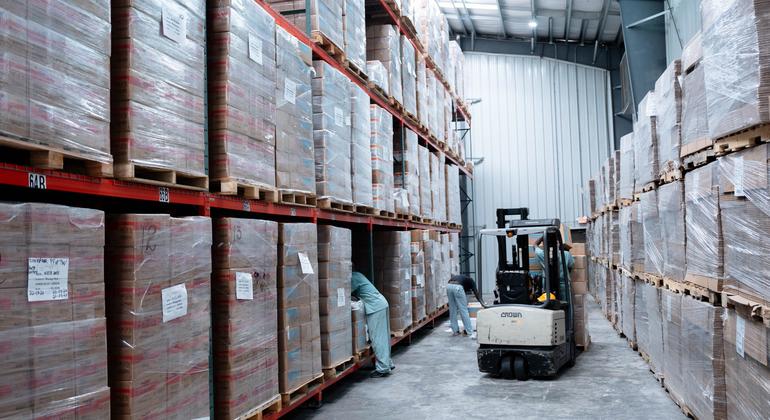Technological advances, automation, AI, cutting workers’ share of wealth: ILO


“The global labor income share, the share of total global income going to workers, is falling.“This means that even as workers contribute to a growing global economy, they receive a smaller share of that growth. This needs to change, as it increases inequality, which disproportionately impacts workers,” said Celeste Drake, deputy director general.
The trillion dollar question
In a scheduled update on the global employment situation, International Labor Organization citing data from 36 countries showing that Global income fell by 0.6 percentage points from 2019 to 2022 “and has remained stable since then.”
This modest decline in income represents a shortfall in annual income for some 2.4 trillion dollars, consistent with a long-term decline of 1.6 percent from 2004 to 2024.
Nearly 40 percent of this decline occurred in three years. COVID-19 pandemic from 2020 to 2022, the ILO said, before pointing to further data showing that While manufacturing output has increased over the past two decades, incomes have not kept pace..
Increased output is welcome
Between 2004 and 2024, global hourly labor productivity increased by 58 percent, said Steven Kapsos, head of data production and analysis at the UN agency.
“It’s a very positive trend, it’s a big output,” he said, but over the same period, incomes have only increased by 53 percent. “So there was a five percentage point gap between productivity growth over that period and labor income growth over that period — and that led to a decline in the labor income share.”
Based on these findings, the ILO’s latest World Employment and Social Outlook report asserts that without government policy intervention, Breakthroughs in AI “could put further downward pressure” on pay packages.
It is important that countries make efforts to reduce such inequalities in accordance with international agreements. Sustainable Development Goals (Sustainable Development Goals), ILO’s Mr. Kapsos stressed, pointing to the bleak global economic outlook.
“Over the last two years as we have seen inflation rates come down, labor income has stagnated, so we haven’t seen a recovery… an increase in rates as inflation falls”, he told journalists in Geneva.
Recommendations from the ILO to governments to tackle this rising inequality trend by 2030 under the Sustainable Development Goals include providing universal social protection.
worker protection and a fair minimum wage. In addition, countries should seek to promote policies that support freedom of association and recognize collective bargaining, “so that workers and employers can negotiate how to share those productivity gains,” ILO Deputy Director-General Ms. Drake stressed.
A snapshot of youth unemployment
Other key elements of the ILO report include the finding that the global youth unemployment rate fell only modestly from 21.3% globally in 2015 to 20.4% this year.
Arab countries have the highest proportion of young workers without jobs – one in three – followed by Africa (nearly one in four – a figure that has not changed in two decades), Asia and the Pacific (one in five), Latin America and the Caribbean (nearly one in five), Europe and Central Asia (more than one in six) and North America (more than one in 10).
The unemployment rate for young women (nearly one-third) remains twice as high as that for men (nearly one-eighth).




